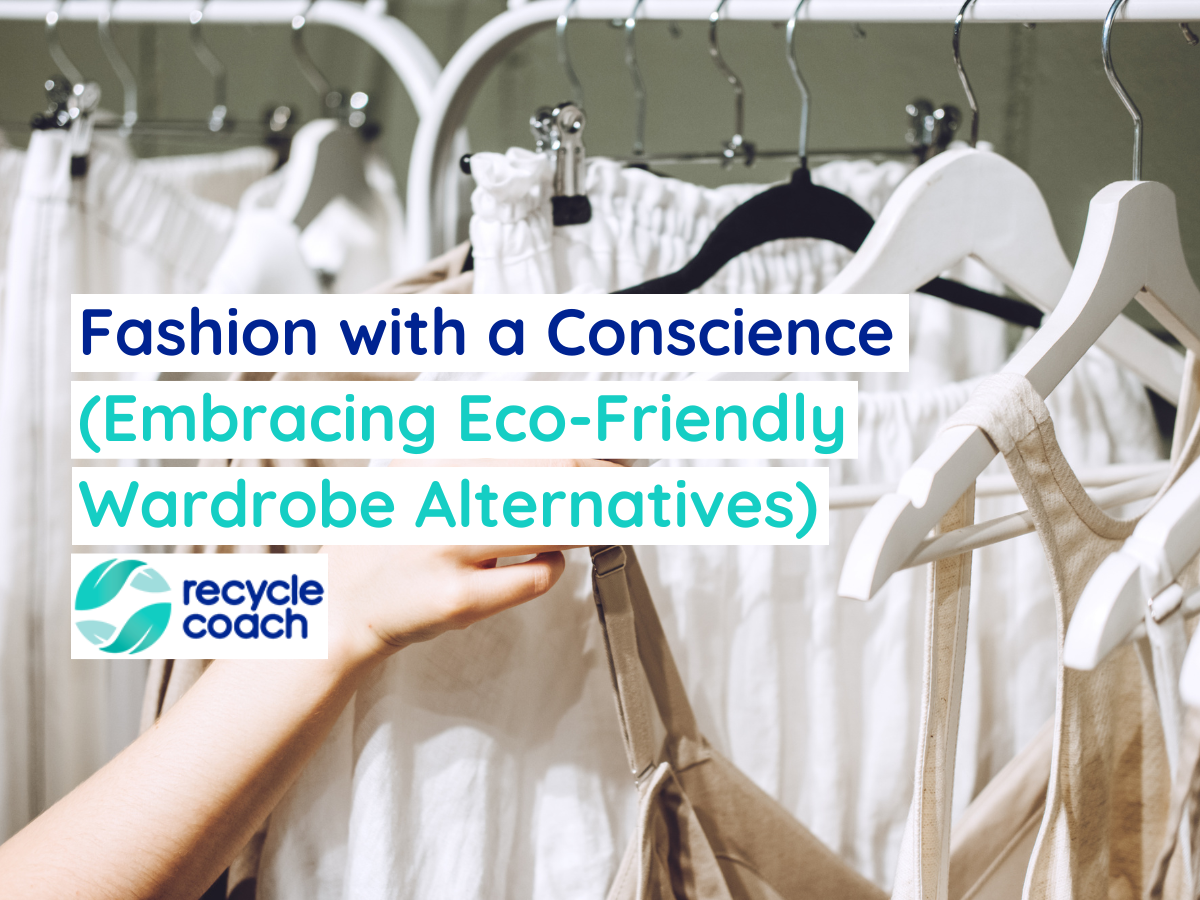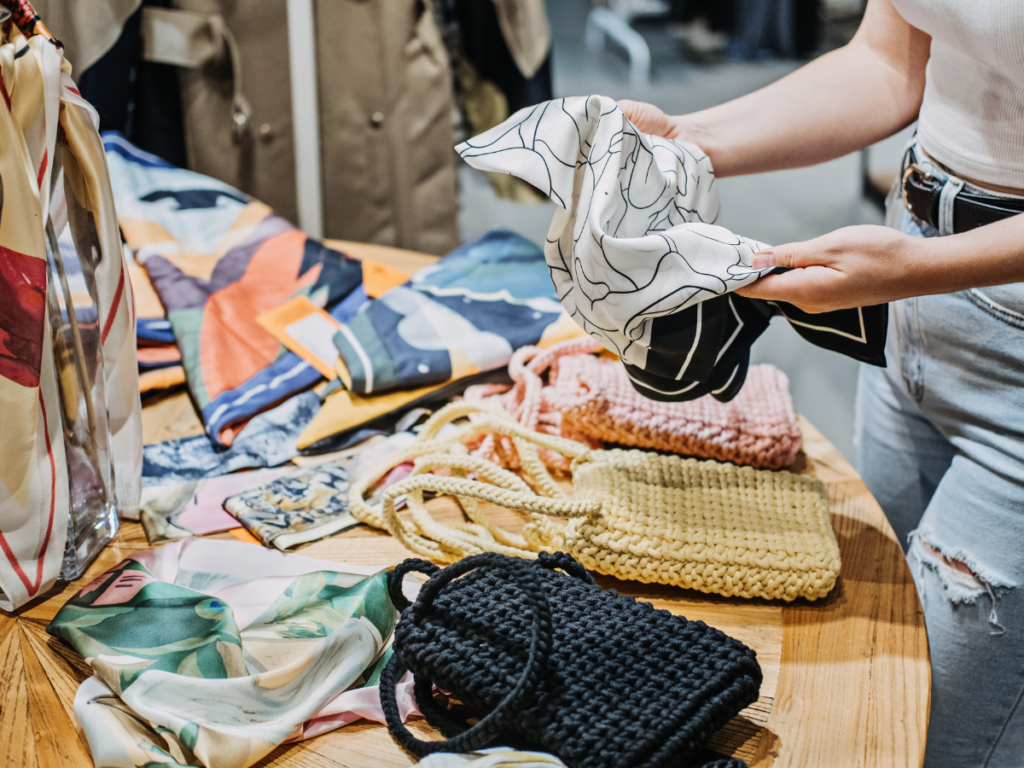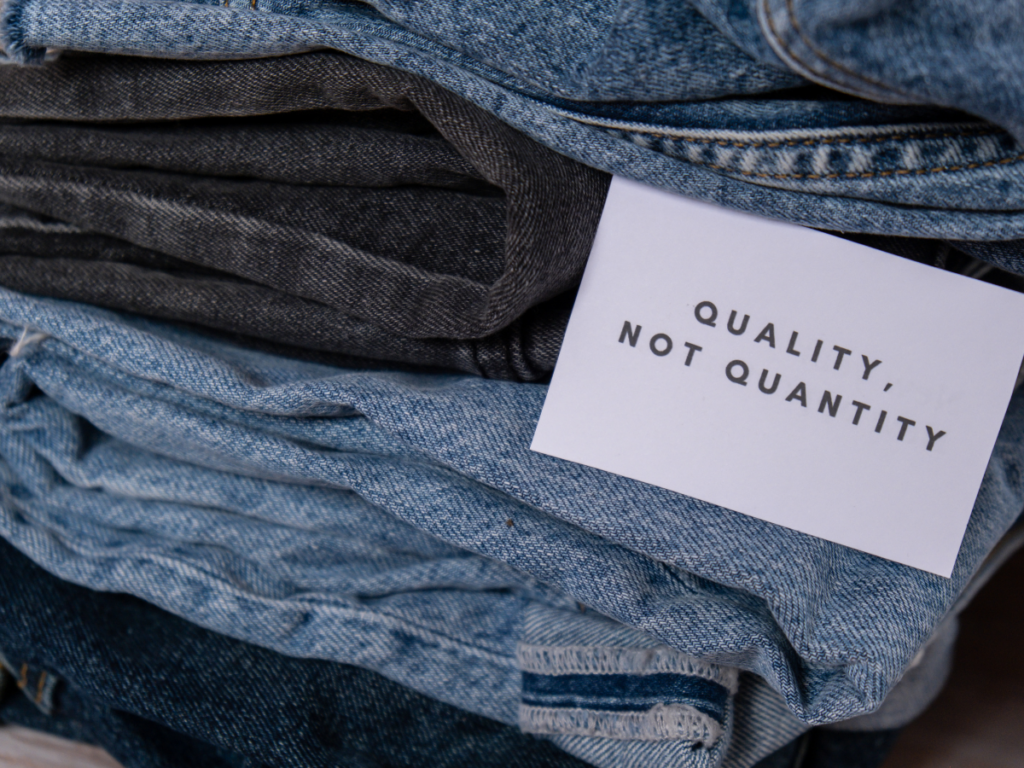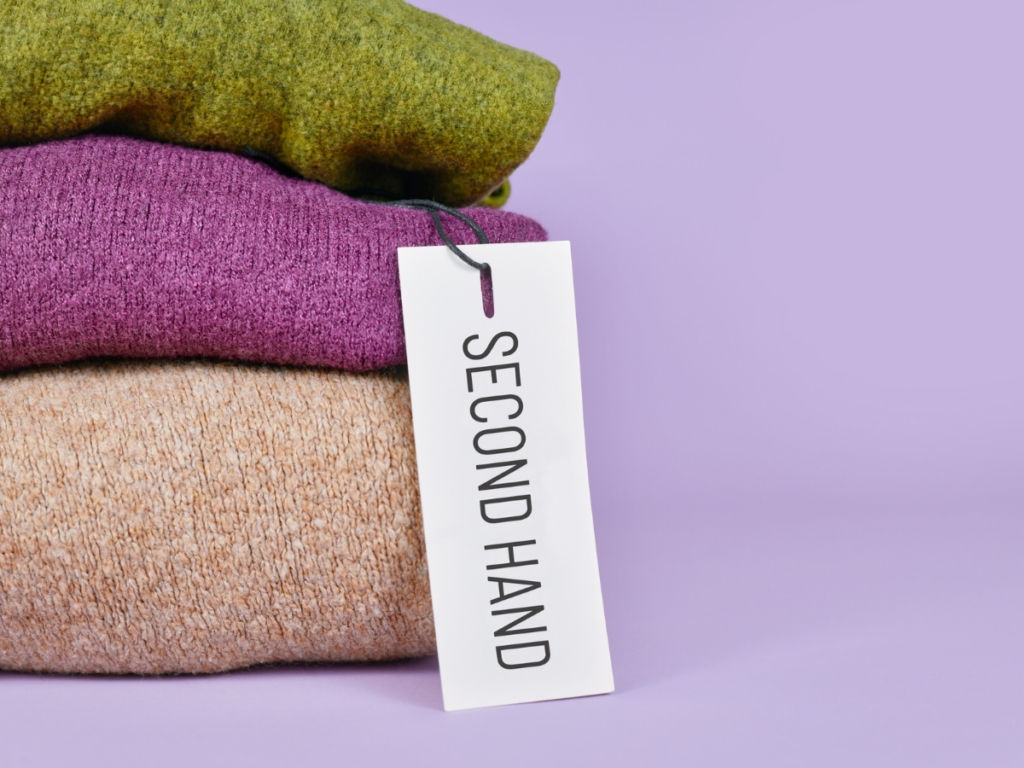Fashion with a Conscience (Embracing Eco-Friendly Wardrobe Alternatives)

Did you know that the fashion industry is one of the largest polluters in the world? The very clothes we wear contribute to environmental degradation, from water wastage to landfill overflow.
But there’s a transformative movement underway: sustainable fashion. Beyond mere trends, it’s a revolutionary approach that intertwines fashion with environmental and ethical responsibilities.
Let’s go through the benefits of sustainable fashion and discover the myriad ways you can contribute to a greener, more ethical wardrobe.
Importance Of Sustainable Fashion In Today’s World

Our planet faces many challenges, from pollution to climate change. Every decision we make impacts the environment. When we choose to wear eco-friendly clothes, we’re making a positive difference.
Think about the amount of water, energy, and resources used to produce a single garment. Now, imagine cutting down on that by choosing sustainable options. It’s not just about fashion; it’s about caring for our home.
Below are some of the benefits of introducing sustainable fashion to the environment and to our society:
- Reduction in Environmental Damage
Fashion production, especially fast fashion, is known for its high water usage, chemical pollution, and greenhouse gas emissions. Sustainable fashion strives to reduce these environmental impacts by using eco-friendly materials and efficient manufacturing processes.
- Promotion of Ethical Work Conditions
Sustainable fashion doesn’t just look at the environment; it also considers the people behind the clothes. Brands that prioritize sustainability usually ensure fair wages, safe working conditions, and no child labor in their supply chain.
- Resource Conservation
Instead of depleting and discarding, sustainable fashion emphasizes using recycled materials, reducing waste, and conserving resources like water and energy.
- Support for Local Economies
Many sustainable brands support local artisans and workers. This not only ensures unique, high-quality items but also boosts local economies and preserves traditional craftsmanship.
- Longevity Over Trends
Sustainable fashion champions quality over quantity. Clothes are made to last longer, reducing the need for frequent replacements and hence cutting down on waste.
- Reduction in Waste
Fast fashion often leads to heaps of discarded clothes. Sustainable fashion, with its emphasis on recycling and upcycling, drastically reduces the amount of clothing that ends up in landfills.
- Empowerment of Consumers
Sustainable fashion educates consumers, giving them the power to make informed decisions. People learn about the impact of their purchases and are given a chance to contribute positively.
- Biodiversity Protection
Sustainable farming practices for materials like organic cotton help maintain soil health, reducing the use of pesticides, and preserving the natural habitat of many species.
- Innovation and New Technologies
The push for sustainability has led to innovation in fabrics and manufacturing processes, like using algae-based materials or zero-water dyeing techniques.
- Preservation for Future Generations
At its core, sustainable fashion is about considering the future. By making fashion eco-friendly today, we ensure a healthier planet for the generations to come.
Sustainable Fabrics and Materials

The fabric of our clothes is the foundation of sustainable fashion. For instance, bamboo grows super fast and doesn’t need pesticides. When turned into fabric, it’s soft and breathable.
Organic cotton, on the other hand, uses fewer chemicals and less water than its non-organic counterpart. And then there’s Tencel, made from wood pulp. It’s not only sustainable but also biodegradable.
So, next time you’re out shopping, consider these fabrics. They’re not only good for the environment but also comfortable to wear.
Recycling and Upcycling

Every piece of clothing has a story. Maybe it’s an old dress from college or a shirt you got on vacation. Even if you no longer wear them, they can have a second life. Upcycling is like a magic trick. It takes something old and transforms it.
You can turn worn-out jeans into a trendy bag or an old scarf into a pillow cover. If DIY isn’t your thing, donate. There are plenty of people who would appreciate your pre-loved items.
Then there’s recycling. More and more brands offer recycling programs. You bring in old clothes, and they make them into something new. In doing so, they reduce clothing waste and save valuable resources.
Minimalism and Capsule Wardrobes

Capsule wardrobes are all about smart choices. Instead of having a closet full of clothes you hardly wear, focus on key pieces. A black dress, a pair of well-fitted jeans, comfortable sneakers, and graphic tees can be mixed and matched in endless ways. By focusing on quality over quantity, you not only save money but also lessen clothing waste.
And let’s not forget about graphic tees outfits. They’re timeless, easy to style, and perfect for any occasion.
Reducing Fashion Footprint

Every clothing item leaves a mark on the planet. From the water used in production to the fuel for transportation, fashion has a big footprint. But we can shrink it. Start by taking care of your clothes.
Wash them less often, avoid the dryer, and mend them when needed. Say no to fast fashion, which often involves poor working conditions and low-quality materials. Instead, invest in durable pieces that last longer.
Supporting Eco-Friendly Brands
The power of your wallet is immense. By choosing sustainable fashion brands, you send a message. You tell the fashion industry that you care about the planet. These brands often use eco-friendly materials, pay fair wages, and ensure safe working conditions.
So, the next time you shop, take a moment to find sustainable fashion brands. They’re not hard to spot. Look for certifications, check their values, and read up on their sourcing practices.
Renting and Sharing Platforms

Let’s face it, we all have those outfits worn just once for a special event. Instead of letting them gather dust, why not rent them out? Or even better, rent an outfit for your next big occasion. It’s cost-effective and sustainable.
Sharing platforms, on the other hand, allow you to swap clothes with others. It feels like getting a new wardrobe without the environmental impact.
Sewing the Future Together
In the tapestry of life, our choices thread together the world of tomorrow. Sustainable fashion isn’t just a trend; it’s a commitment to the planet and its people. By weaving eco-conscious decisions into our daily wear, we craft a brighter, more sustainable future.
Author Bio
Jonathan Mein is an experienced meeting and event planner working with Cuztom Threadz as a communications specialist to educate and share his experience. He is passionate about planning, designing, and throwing events for private and corporate clients. Jonathan Mein’s commitment to sustainability extends beyond his event planning and writing career. He actively promotes eco-friendly practices, including recycling, waste reduction, and sustainable event management.